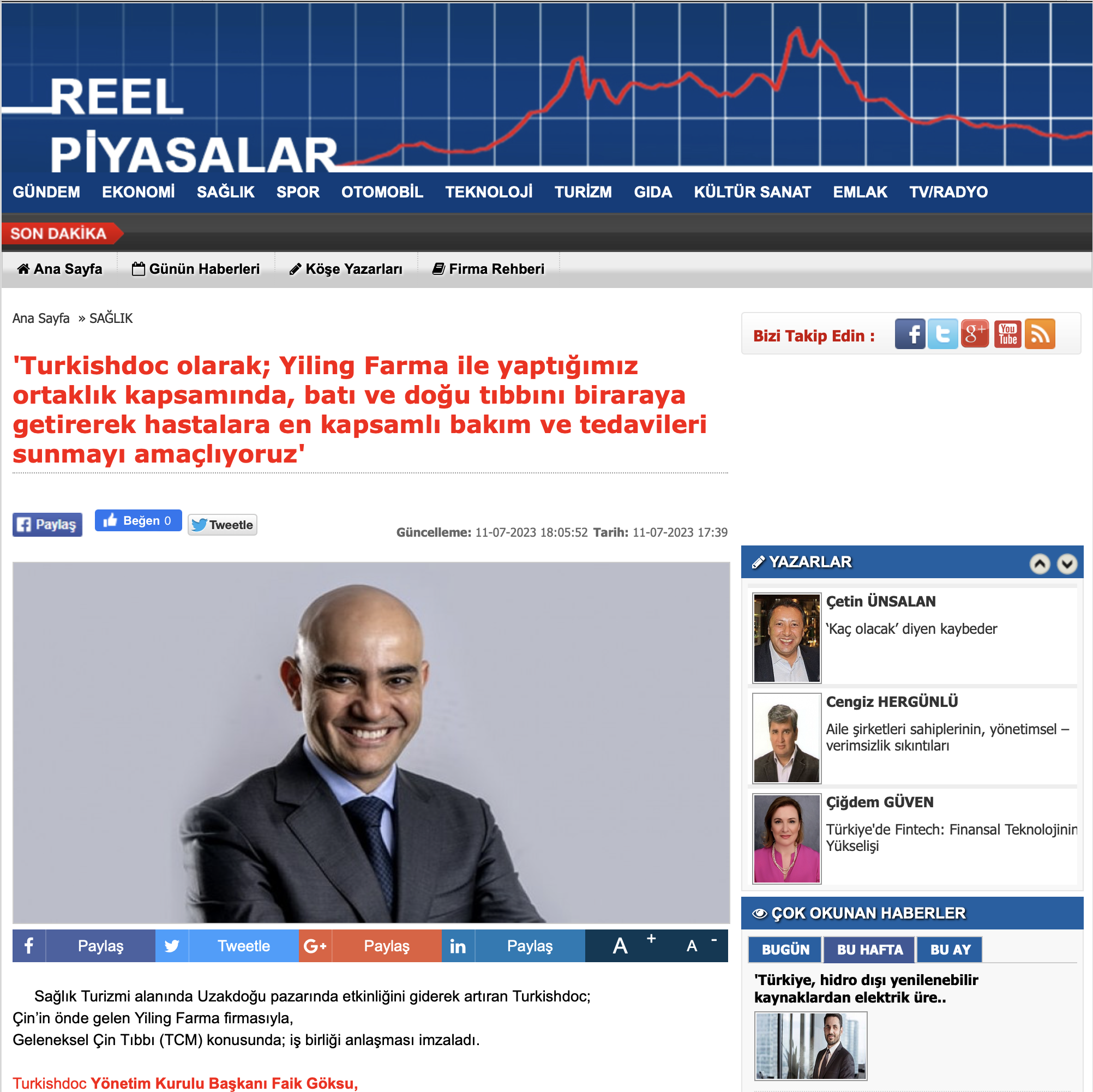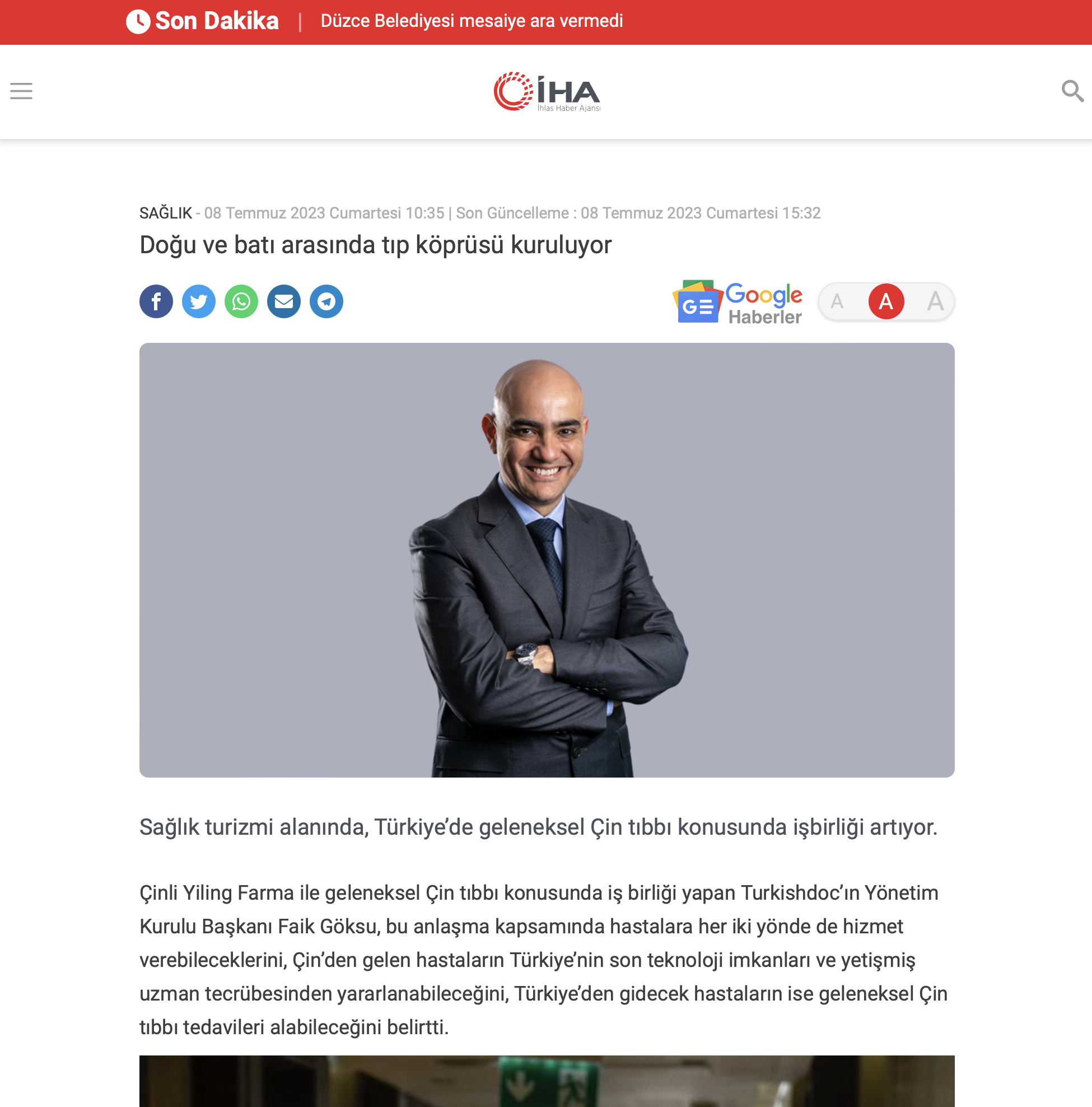Turkishdoc
What Is Carotid Artery Disease, Who Can Be Seen And What Is The Treatment?
Carotid artery disease occurs when blood vessels called carotid arteries become blocked. The blocked carotid arteries narrow, and this is also called carotid artery stenosis. The carotid arteries that supply blood flow to the brain are located on both sides of the neck. Blockage of the blood vessels can interrupt blood flow, leading to stroke, a serious neurological condition. When a brain blockage occurs, oxygen in the brain is reduced and brain cells begin to die. As a result, the risk of stroke is very high. Fatty substances called plaque and cholesterol deposits cause carotid artery disease. If symptoms appear suddenly, you should consult a doctor.
Causes Of Carotid Artery Disease
Atherosclerosis, or hardening of the arteries, is one of the main causes of carotid artery disease. Fatty deposits called plaque cause this hardening. As a result of adverse factors that cause health problems, such as high cholesterol levels, smoking, obesity, cholesterol waste, and fatty material build up in the carotid artery wall. The fatty material can reduce blood flow.
The sudden formation of a blood clot can also reduce or interrupt blood flow to the brain. Therefore, the main causes of carotid artery disease are the hardening of the arteries, accumulation of fatty material in the artery wall, and stenosis of the arteries. Carotid artery disease not only causes damage to vital brain structures, such as stroke but also impairs a person’s daily activities. In addition to all these causes, there are some risk factors for this condition. Following are some of the carotid artery disease risk factors:
- Hypertension
- Smoking
- Diabetes
- Male gender
- Advanced age
- Family history of heart disease
- Obesity
- People with coronary artery disease
Carotid Artery Symptoms
Symptoms of carotid artery disease occur according to the stenosis of the vessels. As a result of progressively narrowing carotid artery vessels, some symptoms begin to appear. Some symptoms are also seen in the formation of temporary clots rather than the stenosis reaching a critical level. This condition, also called transient ischemic attack, is a temporary stroke caused by blockage and low blood flow. Because the symptoms are similar to those of a transient ischemic attack, you may experience:
- Blurred memory
- Difficulty understanding and moving
- Speech and perception problems
- Sudden onset of a severe headache
- Visual disturbances
- Tremor
- Dry mouth
- Not being able to walk
- Difficulty swallowing
Since a transient ischemic attack is an emergency, it should be treated as soon as possible. For this reason, it is vitally important that the patient be taken to the emergency room as soon as possible. Otherwise, it may cause permanent paralysis. In the emergency room, the necessary interventions are carried out by the specialized healthcare team, and the patient’s health condition is taken under control.
Carotid artery occlusion brings some complications. In particular, it can cause a life-threatening stroke. A stroke, a serious neurological health problem, can lead to permanent disability and death without immediate intervention. The conditions that lead to paralysis include reduced blood flow, ruptured plaques, and blockage of blood clots.
Carotid Artery Disease Diagnosis
Carotid artery disease does not cause any symptoms until you have an ischemic attack or stroke. For this reason, regular checkups are essential. During regular check-ups, abnormalities can be detected with a stethoscope. If symptoms of an ischemic attack or stroke are observed, the patient is given an emergency intervention by specialized healthcare teams. The diagnosis of carotid artery disease begins with a physical examination. This is followed by a review of the patient’s medical history and an examination of the patient’s speech and mental status. The following diagnostic methods are used to confirm a suspicion of carotid artery disease:
- Magnetic Resonance Angiography (MRA)
This method, which visualizes the vessels of the brain, is performed with a powerful magnet. The images are analyzed and then evaluated. MRA is a powerful method that can detect vascular blockages in any part of the brain.
- Computed Tomographic Angiography (CTA)
CTA uses X-rays and computer technology to reveal damage to the brain. It is a diagnostic method to detect carotid artery disease because it detects damage to the brain.
- Brain Angiography
Cerebral angiography, which visualizes the carotid artery, is a surgical procedure. Carotid artery blockage and narrowing are diagnosed with this surgical method.
- Ultrasound
It is a diagnostic method that tests blood pressure and flows in the carotid arteries.
Carotid Artery Disease Treatment
The treatment of carotid artery disease varies from person to person. The level of the disease and the general health status of the patient are among the factors that cause this variability. Therefore, some treatment methods can prevent serious health problems that may be caused by this condition and control the symptoms. Carotid artery disease is treated with medication or surgery. Below you will find information about the treatment methods for this neurological disease:
Medication: Medication for carotid artery disease includes various medications. The doctor prescribes vasodilators that will widen the carotid arteries. Statins, which reduce plaque formation in the carotid arteries, are also included in the drug treatment. Blood thinners or aspirin may also be used to prevent clotting.
Surgical procedures: Some surgical procedures may be necessary if the carotid artery blockage is severe or if the patient has had an ischemic attack or stroke. Carotid endarterectomy is one of the surgical procedures recommended for this condition. In this procedure, an incision is made in the front of the neck to access the carotid artery and remove the plaques. After removal, the artery is closed with sutures or a graft.
Another surgical procedure for carotid artery disease is carotid angioplasty and stenting. This procedure aims to restore blood flow and open blocked arteries. It is performed under local anesthesia by giving the patient sedative drugs. It is performed by entering the groin veins with a catheter. The blocked carotid artery is accessed, and angioplasty is performed on the damaged vessel with a special balloon catheter. After this procedure, which reduces the stenosis, a stent, which is a special tube, is placed in the area where the blockage is located. This prevents the reoccurrence of the blockage.
As a result, these are the treatments for carotid artery disease. However, for the treatments to be effective, it is useful to make some changes in lifestyle. The following lifestyle changes can be made to prevent carotid artery disease:
- Smoking must be quit.
- Eat a healthy diet.
- Alcohol should be avoided to the greatest extent possible.
- Regular doctor check-ups should be done.
- Avoid a sedentary life and exercise regularly.
- Weight control should be ensured.
Diabetes and blood pressure control should be done regularly.











